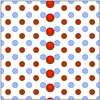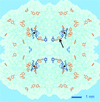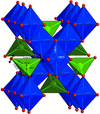issue contents
September 2016 issue

editorial
NEUTRON | SYNCHROTRON
The leading role in science played by crystallography is heavily dependent on Big-Science facilities. The need for Europe-wide coordination of operational resources in Big Science is discussed with particular reference to neutron sources.
scientific commentaries
NEUTRON | SYNCHROTRON
Since drugs bind to their targets through directional H bonding and non-directional hydrophobic and electrostatic interactions, neutron crystallography can help guide structure-based drug design. This is illustrated by McKenna and co-workers [Aggarwal et al. (2016), IUCrJ, 3, 319–325] who describe the room-temperature neutron structure of human carbonic anyhydrase II in complex with the clinical inhibitor methazolamide to 2.2 Å resolution, and compare this with the previously determined room-temperature neutron structure of human carbonic anyhydrase II in complex with the clinical inhibitor acetazolamide to 2.0 Å resolution [Fisher et al. (2012). J. Am. Chem. Soc. 134, 14726–14729].
MATERIALS | COMPUTATION
Recent studies highlighting the importance of diffuse scattering for materials science are presented.
research papers
MATERIALS | COMPUTATION
A general approach is developed to determine three-dimensional grain morphology and orientation in single-phase and nanocrystalline materials.
MATERIALS | COMPUTATION
Published diffuse X-ray scattering from the high-Tc superconductor HgBa2CuO4+δ has been re-examined with a view to developing a model that more satisfactorily accounts for the observed patterns. It is proposed that it is correlated shifts of the Ba atoms along the length of the defect chains that are the primary source of the observed diffuse scattering lines and that the variations of intensity within these lines originate from lateral shifts of both Hg and Ba atoms away from the defects.
BIOLOGY | MEDICINE
The room-temperature X-ray/neutron structure of human carbonic anhydrase II in complex with methazolamide has been determined. The study provides new insights into the hydrogen-bonding changes that take place within the active site of an enzyme upon drug binding, including changes in the orientation of the H atoms of residues and waters, and the observed displacement of water.
PDB reference: hCA II, complex with methazolamide, 5c8i
NEUTRON | SYNCHROTRON
Radical sites in catalase have been located by the method of time-resolved polarized neutron scattering from dynamically polarized protons. This method is about ten times more sensitive than magnetic neutron scattering and therefore particularly suitable for very dilute paramagnets.
CHEMISTRY | CRYSTENG
Download citation


Download citation


Four amino acids with linear, hydrophobic side chains display an unprecedented series of solid-state phase transitions between 100 and 470 K. These involve hydrogen-bond rearrangements, sliding of molecular bilayers in one or two dimensions and development of side-chain disorder. The first modulated structures of amino acids are reported.
CHEMISTRY | CRYSTENG
Download citation


Download citation


In the MgxCu1 − xCr2O4 solid solution, progressive substitution of the Jahn–Teller and d9 Cu2+ cation with the spherical and closed-shell Mg2+ cation results in a gradual reduction of the splitting of a and c unit-cell parameters, until transformation occurs from the tetragonal I41/amd to the cubic  archetype spinel structure. Tetragonal members of the series transform to cubic at high temperature, and the transition temperature decreases with increasing Mg content. The phase transition is first order in character for Cu-rich samples and evolves towards second-order character at intermediate compositions.
archetype spinel structure. Tetragonal members of the series transform to cubic at high temperature, and the transition temperature decreases with increasing Mg content. The phase transition is first order in character for Cu-rich samples and evolves towards second-order character at intermediate compositions.
CHEMISTRY | CRYSTENG
Download citation


Download citation


Single-crystal crystallography shows that one polytype of the AuI trimer tris(μ2-3,5-diisopropyl-1,2,4-triazolato-κ2N1:N2)trigold(I), [Au3(N3C8H14)3], undergoes four successive phase transitions between 1 and 3.5 GPa, driven by aurophilic interactions, and that the ambient-pressure structure re-emerges at high pressure.
MATERIALS | COMPUTATION
The crystal structure of SnTe is investigated from 20 to 800 K in two samples with different carrier concentrations by single-crystal and powder synchrotron X-ray diffraction, coupled with maximum entropy analysis.



 journal menu
journal menu




 access
access






















